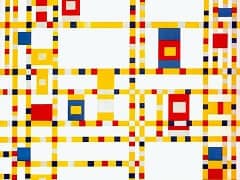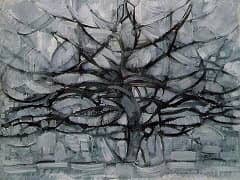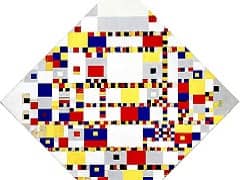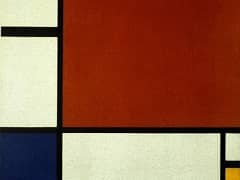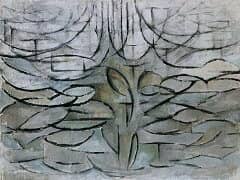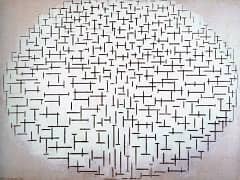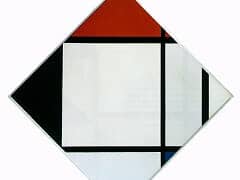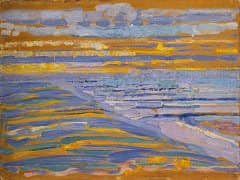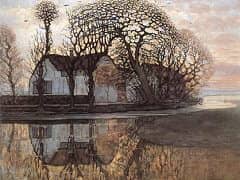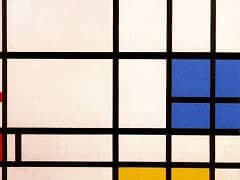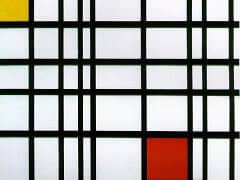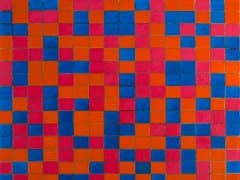The Red Cloud, 1907 by Piet Mondrian
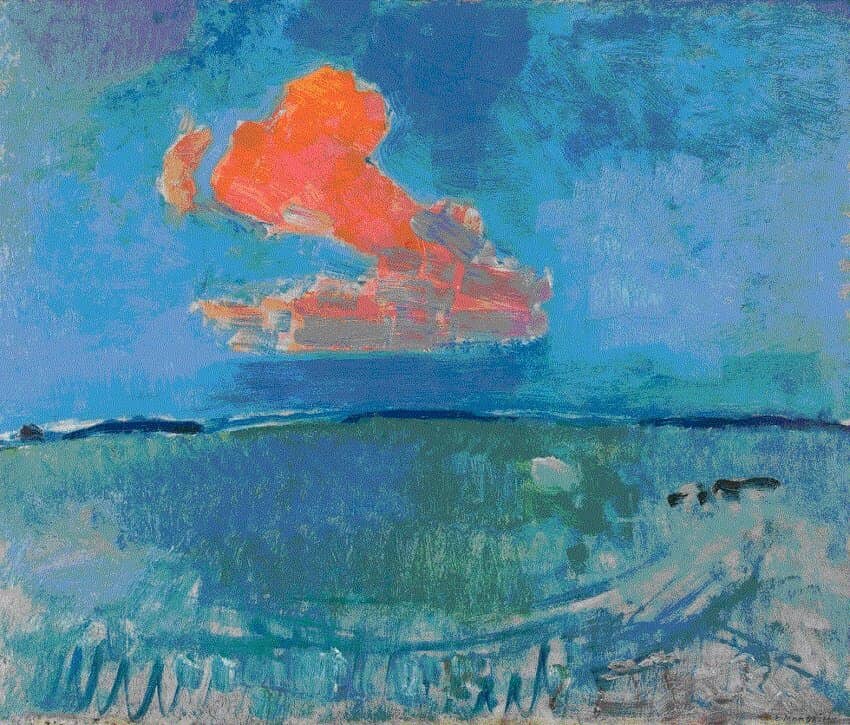
The Red Cloud is convincing evidence of the renewal in Mondrian's painting, of the fact that he had succeeded in freeing himself from the conventions of the Hague school and had found the link to the new conception of painting that was making headway everywhere at that time: expressionism, or French fauvism, or in any case the trends in European painting which plainly emphasized the importance of color. The so-called Quadrennial Exposition that was held in Amsterdam in 1907, and in which such Dutch artists as Kees van Dongen, Otto van Rees, and Jan Sluijters exhibited - men who accentuated color in the new sense as the most important of means - may well have been the stimulus for this re-orientation in Mondrian's work.
The Red Cloud has come to the Gemeentemuseum in The Hague as a gift from Mondrian's friend A. P. van den Briel, through whom it can be given the date of 1907 and localized in Oele, a village in the far eastern part of the Netherlands. This picture is an entirely different type of painting from the works that have served to illustrate Mondrian's evolution up to this point. It is actually a sketch, a work set down on cardboard in free rapid motion, catching the strong and wondrous impression of a brief but revealing natural phenomenon.
In 1907 Amsterdam sponsored the Quadrennial Exhibition, featuring such painters as Kees van Dongen, Otto van Rees, and Jan Sluijters, who were Post-Impressionists using pure colours in bold, nonliteral ways. Their work was strongly influenced by the forceful expression and use of colour in the art of Post-Impressionist Van Gogh, whose work had been featured in a large exhibition in Amsterdam in 1905. Such daring use of colour was reflected in Mondrian's The Red Cloud. Here too we can see the mastery that Mondrian, at thirty-five, had attained in the use of his pictorial means.
Although Mondrian painted the The Red Cloud with the greatest freedom and speed, he did so with a sureness that did not misplace a single stroke or add a single unnecessary accent. Against the thin paint of the pasture in the foreground, set down in vivid dashes, and the light-blue of the luminous sky, the powerful form of the red cloud contrasts as a great splash of color. The brush strokes are visible, and the red, which increases in intensity as it goes upward, is modulated as if in a sequence of tones. It is color, as an independent emotional value, that dominates this painting and sets its stamp on it. The aim of the artist's quest is no longer the equilibrium derived from the forms of visible nature; he has discovered color and realized how its power can disrupt a previously attained equilibrium. A new period of search and experiment proved necessary in order to integrate color into this striving for equilibrium, an urge that was deep-rooted in Mondrian's character, education, and artistic formation. But it is typical of him as an artist and as a man that in this quest for equilibrium and compositional structure he strove to introduce ever-new elements he had discovered himself. The Red Cloud is a proof of this enlargement of his horizon, a sign of mastery, as well as the starting point for a new and rich development.

